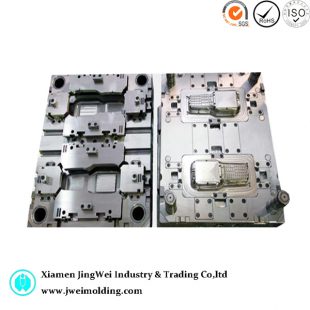
Plastic part performance and cost can be significantly enhanced by proper part design features. Through the use of simple designs and by following general mold ability guidelines for plastic parts, design engineers can avoid problems occurring during manufacturing and also reduce the cost of parts. These factors require designers to introduce adequate design features that can lessen the stress level within a part and help develop low-shrinkage, warp-free parts.Consider the following injection molding design considerations for designing better plastic parts:
Rule 1:Radius
During injection molding, the molten plastic has to navigate turns or corners. Rounded corners will ease plastic flow, so engineers should generously radius the corners of all parts. In contrast, sharp inside corners result in molded-in stress—particularly during the cooling process when the top of the part tries to shrink and the material pulls against the corners.
The radius should always be with regards to the part thickness thereby eliminating the prospects of high-stress concentration and resulting in the breakage of the plastic part. General guideline suggest that the thickness at the corner should be in the range of 0.9 times the nominal thickness to 1.2 times the nominal thickness of the part.
Rule 2: Determine an apt location for gate
If varying wall thickness cannot be avoided, then designers should provide for proper gate location. If this is not supplied, then attaining uniform pack of the molded part will be nearly impossible. The most effective gate location is when the melt enters at the thickest part of the cavity and then flows to the narrower areas.
Rule 3: Determine Optimal Wall Thickness
Theoretically, there is no maximum wall thickness for injection-molded parts. But designers are more concerned with determining the minimum wall thickness because thinner is almost always less expensive. Two factors contribute to this: first, thinner parts require less raw plastic material, and second, they cool faster. To determine the most suitable wall thickness, engineers should first consider product requirements. Generally, strength dictates the wall thickness. Engineers can also rely on a finite analysis to select the optimal wall thickness.
Rule 4: Keep Wall Thickness Consistent
Plastic part walls must be uniform in thickness. This is the most basic design parameter, and strict adherence to it will eliminate many manufacturing problems. Parts with uniform walls will not warp, will fill properly and will fit together because variable shrinkage is minimized. Wall thickness variations should not exceed 10% in high mold shrinkage plastics. In fact, even this slight disparity can introduce processing and quality problems.
Rule 5: Select Suitable Draft Angles
From a cost and manufacturability viewpoint, the ideal draft angle is the largest angle that will not lessen the customer’s satisfaction with the product. The minimum allowable draft angle is harder to quantify. Plastic material suppliers and molders are the authority on what is the lowest acceptable draft. In most instances, 1° per side will be sufficient, but between 2° and 5° per side would be preferable. If the design is not compatible with 1°, then allow for 0.5° on each side. Even a small draft angle, such as 0.25°, is preferable to none at all.
OK industry has served the injection molding industry for over 15 years and has a team dedicated to providing you with the most cost effective solutions for design and manufacturing plastic injection molded parts.To know more,Please visit us at :okmolding.com or via info@okmolding.com.

0 responses on "5 Design Rules of Problem-Free Injection Molding"